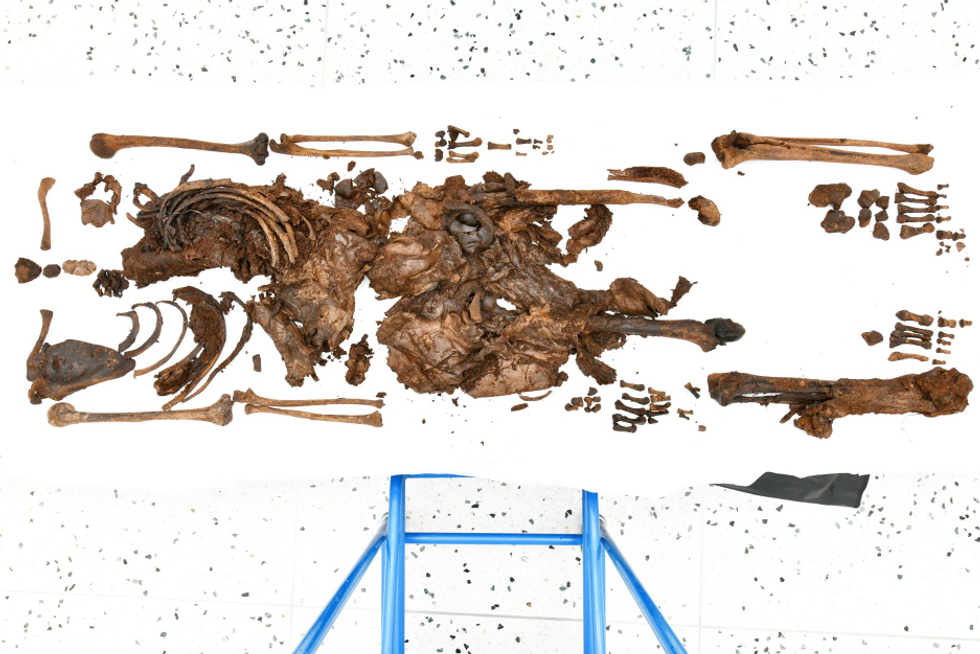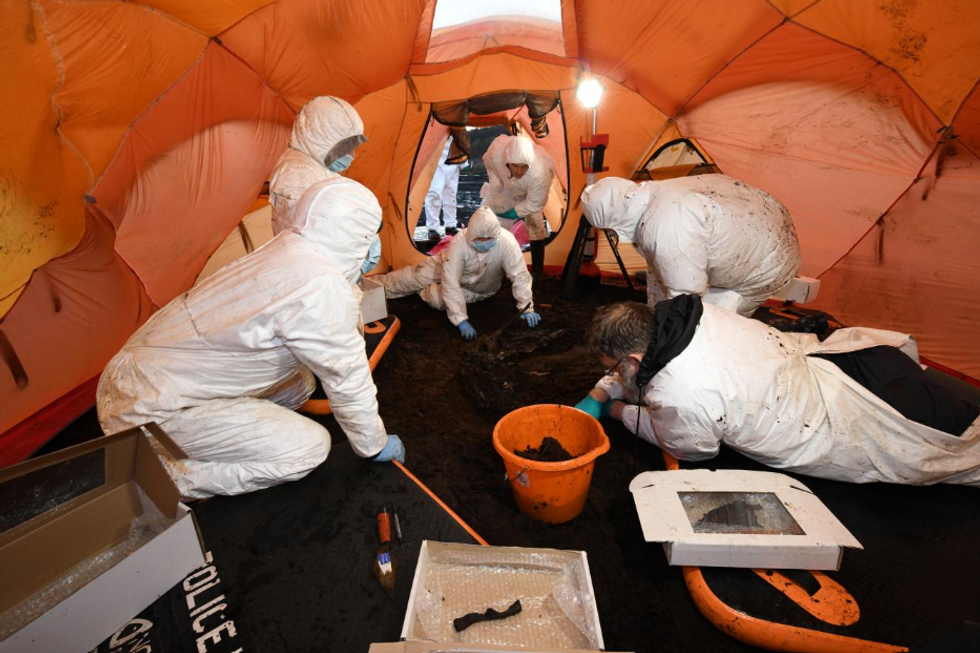Eliana Silver
Guest Reporter
Ancient human remains discovered in a Co Derry bog have been identified as belonging to a young woman from the Iron Age, not a teenage boy as previously believed.
The discovery, now known as the Ballymacombs More Woman, was made in bogland near Bellaghy in 2023.
Initial assessments suggested the remains were those of a boy aged between 13 and 17.
However, new research has revealed they belonged to a woman aged between 17 and 22 years old, in what experts are calling "one of the most important archaeological discoveries on the island of Ireland".

The remains have been dated to between 343 BCE and 1 BCE during the Iron Age period.
The woman stood approximately 5ft 6in tall, with her body being well-preserved in the bog. Whilst much of the body remained intact, the skull was notably absent and was not recovered during the excavation.
The discovery is particularly significant as most bog-preserved individuals from this period are male.
Analysis of the remains revealed cut marks on the neck vertebrae, indicating death by intentional decapitation. Experts believe this may be part of a pattern of ritual and sacrifice during the Iron Age period.
MORE LIKE THIS:
Professor Eileen Murphy from Queens University, who conducted the osteological assessment, said: "As is the case for so many Iron Age bog bodies, the young woman suffered a highly violent death, which involved the flow of blood from her throat followed by decapitation."
"The head was taken away, but the body was left where it fell only to be discovered by machine workers some 2,000 years later," she added.
The study was led by National Museums NI and involved extensive collaboration across multiple institutions.
Partners included the Police Service of Northern Ireland, National Museums of Ireland, and universities across the UK, Ireland and Europe.

Niamh Baker, curator of archaeology at National Museums NI, highlighted the discovery's importance, saying: "This important discovery gives us a glimpse into the lives of the people of our ancient past and offers insights into how they lived, interacted with their environment, and developed their cultures."
Professor Murphy added that "further scientific analysis will no doubt yield more fascinating findings".
Archaeologists also recovered a woven item made from plant material beneath the woman's knees.
The artefact's exact nature remains unknown, with specialists at National Museums NI currently working to identify it.
This discovery adds another layer of intrigue to the remarkable find, potentially offering further insights into Iron Age customs and material culture.
Find Out More...
The discovery, now known as the Ballymacombs More Woman, was made in bogland near Bellaghy in 2023.
Initial assessments suggested the remains were those of a boy aged between 13 and 17.
However, new research has revealed they belonged to a woman aged between 17 and 22 years old, in what experts are calling "one of the most important archaeological discoveries on the island of Ireland".

The remains have been dated to between 343 BCE and 1 BCE during the Iron Age period.
The woman stood approximately 5ft 6in tall, with her body being well-preserved in the bog. Whilst much of the body remained intact, the skull was notably absent and was not recovered during the excavation.
The discovery is particularly significant as most bog-preserved individuals from this period are male.
Analysis of the remains revealed cut marks on the neck vertebrae, indicating death by intentional decapitation. Experts believe this may be part of a pattern of ritual and sacrifice during the Iron Age period.
MORE LIKE THIS:
- Archaeology breakthrough: Scientists make incredible discovery in depths of where Bible says Moses parted Red Sea
- Archaeology breakthrough: Tomb of 3,500-year-old Egyptian pharaoh uncovered in first major discovery since Tutankhamun
- Archaeology breakthrough: Iron Age artefacts discovered with 'extremely rare' ingredient from space
Professor Eileen Murphy from Queens University, who conducted the osteological assessment, said: "As is the case for so many Iron Age bog bodies, the young woman suffered a highly violent death, which involved the flow of blood from her throat followed by decapitation."
"The head was taken away, but the body was left where it fell only to be discovered by machine workers some 2,000 years later," she added.
The study was led by National Museums NI and involved extensive collaboration across multiple institutions.
Partners included the Police Service of Northern Ireland, National Museums of Ireland, and universities across the UK, Ireland and Europe.

Niamh Baker, curator of archaeology at National Museums NI, highlighted the discovery's importance, saying: "This important discovery gives us a glimpse into the lives of the people of our ancient past and offers insights into how they lived, interacted with their environment, and developed their cultures."
Professor Murphy added that "further scientific analysis will no doubt yield more fascinating findings".
Archaeologists also recovered a woven item made from plant material beneath the woman's knees.
The artefact's exact nature remains unknown, with specialists at National Museums NI currently working to identify it.
This discovery adds another layer of intrigue to the remarkable find, potentially offering further insights into Iron Age customs and material culture.
Find Out More...
